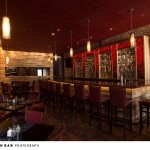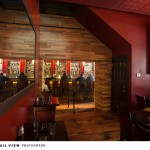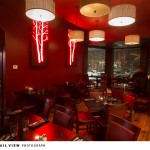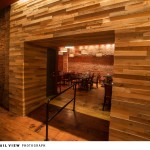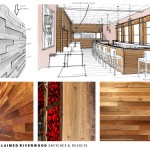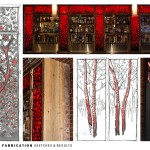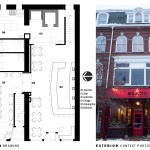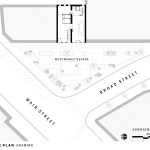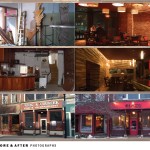Blaze Restaurant
Project Name: Blaze Restaurant
Once touted as “the lumber capital of the world,” Bangor is one of those boom-bust towns in Maine’s 2nd district that almost went bust, but is now making a comeback. Known as Maine’s Queen City, Bangor is now home to Blaze Restaurant – a successful craft beer & wood-fired cuisine, farm-to-table restaurant. The design intent was to bring back the feeling of that industrial lumber town, and complement it with local building products, updated finishes, reclaimed materials, elegant lighting, and a cushy, refined, atmosphere.
Situated on the first floor of what is known as the Webster Treat block – a six-bay brick structure built in the Italianate style in 1869, it took nearly six months to both remove over a century of patchwork construction, and to repair the existing bones of the building. The original wood timber framing, peach and apricot load-bearing brick walls, and historic tin ceilings were saved. The design took cues from these elements but pushed to expand, and harmonize notions of tradition and common history with contemporary design. Blaze is the result of this synergy.
The restaurant relies on two brick ovens that were built using traditional firebrick, and reclaimed brick found in the fireplace foundation of a turn of the 19th century farmhouse in Holden, Maine. Built by Brick Stove Works, these ovens were designed to recycle excess heat to the second floor, using a chimney that is situated within the stairwell.
The flooring consists of wide pine boards that were face-nailed with antique cut nails. In primary areas, suspended ACT ceilings resembling the original tin Wellington pattern were used. This has allowed customers to hear each other easily in a hard-scape that would have otherwise created reverberation. Maine Heritage Timber supplied era-appropriate reclaimed timber from the bottom of Quakish Lake, a tributary of the Penobscot River. This was applied along a sweeping top-lit wall to create a richly textured backdrop to dining. Reclaimed river wood was also used to create the “live-edge” bar display.
The patterned panels in this bar display (as well as the lighted pictures of birch trees, in the bar and dining rooms) were made using a series of custom, LED-illuminated stencils with sprawling branches that sprinkle the bar area with shimmering, confetti-like, leaves. These were hand drawn, transferred to CAD, and then cut on a CNC milling machine in the Material Science Lab at University of Maine.

